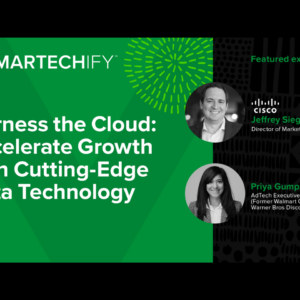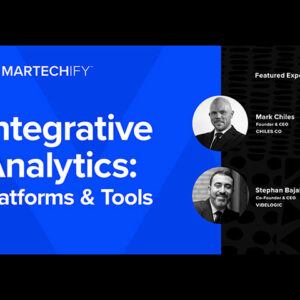It’s All About the Journey
- Ascend Marketing
- Campaign Optimization, Customer Experience (CX), Multi-Channel Journeys
Our listening tour
This year Ascend Marketing leaders hit the road to hear how our customers are adapting to post-pandemic-AI-driven marketing. You might say we made a journey to hear about yours!
Free the data
At recent regional meetings, we heard from a wide variety of Fortune 500 executives across multiple industries: finance, telecommunications, healthcare, manufacturing and software to name a few. What subject was on the minds of most? No surprise — their data. Massive amount amounts of data, inconsistent quality and limited availability are perineal themes. But now marketers are considering how to use AI/ML to harness engagement data in order to create more effective customer journeys.
Data silos still dot the landscape of many companies, making merging information from disparate and disconnected data bases for critical analysis a daunting task at the very least. When data can’t be easily brought together to form a consolidated view of the customer’s experience or identify changes in direction, journey marketing efforts can stop before getting started. We heard the frustration.
So what are companies doing to combat this data dilemma? How are they successfully integrating data from around the organization to turn it into a powerful tool for journey marketing? We shared our experiences in using an intelligent data layer and various next-generation martech tools to help quickly frame a unified view of customer engagement. Customer Data Platforms are becoming increasingly essential for companies wanting to stay in step with their key segments.
All in for the journey
Organizational commitment to journey marketing is another challenge we heard a lot about in our travels. In many companies, it’s just not clear who owns the journey. Does Sales own the relationship? Or is it account-based marketing? Who decides the journey strategy and does everyone buy-in to?
To be most effective, journey marketing must coincide with clearly defined roles and responsibilities – and the level of company-wide commitment has a definitive impact on momentum and success. From what we hear, vigorous executive support for the journey framework generally results in advancement rapidly, while organizations that relegate journeys to the mid-level marketing function or treat them as short-term undertakings reported noticeably mediocre or lagging progress.
It’s personal
Executives we spoke with keyed in on personalization. Journey marketing is, by definition, about delivering highly-personalized paths steered by engagement data. Never before have marketers been able to illuminate customer behavior and orchestrate experiences with this degree of accuracy. And AI is making continuous optimization a reality as well.
A high degree of personalization is clearly ideal, but how do you reach that level? How do you build the content library required? How can you manage all that creative versioning? How do you know what/when to deliver? How much AI involvement is too much? We heard the (ironic) concern about personalizing with AI and are delivering thought leadership about a pragmatic stance.
Big thought: Start small
The shift from “batch-and-blast” to journey marketing is transformational for any organization. So what’s the best approach? Our customers said, “Start Small.”
One executive we spoke with was moving from basic, automated email campaigns to a more comprehensive journey strategy. Another was well down the road in delivering a journey experience but is now working to better harness data for future campaigns. Yet another reported being stuck in their data, with the objective of reaching across silos to unleash an automated journey experience. In each case, the moral of the story was that an organization shouldn’t start by taking on more than it can handle. A limited learn-as-you-go scope reduces risk, allows experimentation and avoids “another failed initiative” syndrome.
A simpler, step-by-step approach makes instituting new journey programs more likely to succeed and, as positive results start coming in, credibility for the program is built throughout the organization. This can feel slow to journey-marketing advocates but allows planning for adjustments and buy-in along the way.
Listening tour wrap up
What’s the principal takeaway from our road-trip discussions? If there were just one, it would have to be that the customer journey approach is transformational and fundamentally shifting the way marketers do marketing, giving them the ability to engage customers on a level that, until now, hasn’t been part of the conversation. It’s a highly personal and, ultimately, more human level that lets them meet customers where they are, satisfy their buying needs and build relationships. For the marketers we heard from, it seems that’s a journey well worth taking. We’re thankful for the enthusiastic participation or our customers and look forward to sharing more insights as we journey towards change together.













